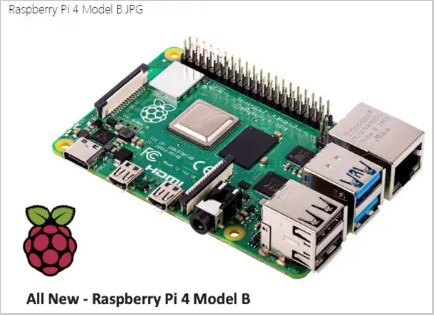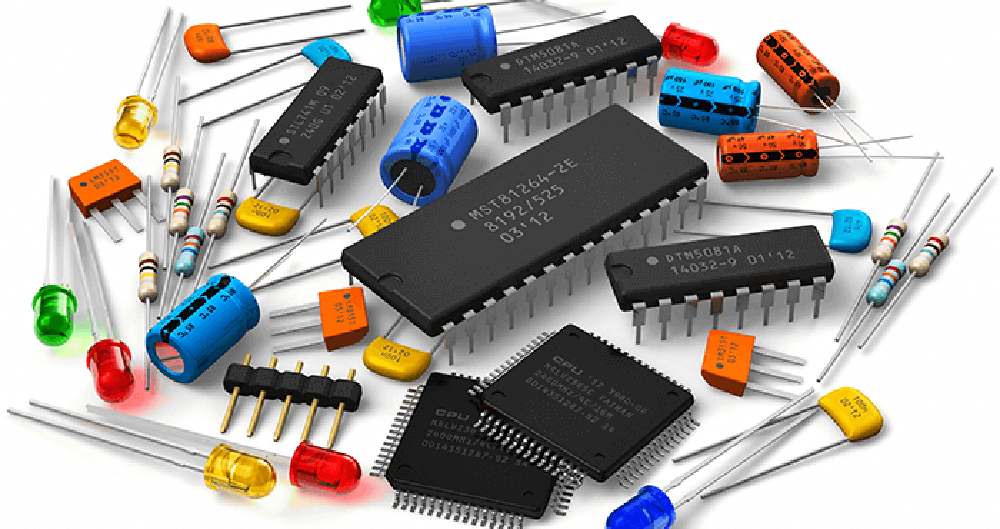Raspberry Pi 4 vs Raspberry Pi 3 “A New Slice of Pi ”

Who is ready for another piece of pi? Every time a new Raspberry Pi comes out, there is excitement from all angles. This time is no different, in fact, it might be more exciting. Back in January, the raspberry pi foundation mentioned: “This will be the last Pi of its kind”. The new Raspberry Pi 4 Model B has launched today, with some new and much-anticipated features. Really amazing!
The Raspberry Pi 4 Model B is the first pi with a 28nm processor. Moving to the 28nm from the 40nm based products allows the new pi to utilize a much more powerful processing core and have better I/O performance. This new pi could be a full PC replacement. Every engineer and/or maker in the world requires a dual monitor display for desktops. Let’s see how the new pi can increase productivity and allow for writing python and web browsing on two separate screens.
Here is the dirt…. What has changed,hoho? What is missing? How has the pi foundation listened?
Specification of the new Raspberry Pi
Here are the official key features to the new board:
- Processor:
- Broadcom BCM2711
- quad-core Cortex-A72 (ARM v8)
- 64-bit SoC @ 1.5GHz
- Memory:
- 1GB, 2GB or 4GB LPDDR4 (depending on model)
- Connectivity:
- 2.4 GHz and 5.0 GHz IEEE 802.11b/g/n/ac wireless LAN
- Bluetooth 5.0, BLE
- Gigabit Ethernet
- 2 × USB 3.0 ports
- 2 × USB 2.0 ports.
- GPIO:
- Standard 40-pin GPIO header (fully backwards-compatible with previous boards)
- Video & sound:
- 2 × micro HDMI ports (up to 4Kp60 supported)
- 2-lane MIPI DSI display port
- 2-lane MIPI CSI camera port
- 4-pole stereo audio and composite video port
- Multimedia:
- H.265 (4Kp60 decode)
- H.264 (1080p60 decode 1080p30 encode)
- OpenGL ES, 3.0 graphics
- SD card support:
- Micro SD card slot for loading operating system and data storage
- Input power:
- 5V DC via USB-C connector (minimum 3A1)
- 5V DC via GPIO header (minimum 3A1)
- Power over Ethernet (PoE)–enabled (requires separate PoE HAT)
- Environment:
- Operating temperature 0–50°C
- Compliance:
- For a full list of local and regional product approvals, please visit https://www.raspberrypi.org/documentation/hardware/raspberrypi/conformity.md
- Production lifetime:
- The Raspberry Pi 4 Model B will remain in production until at least January 2026.
How do I think about this new Raspberry Pi ???
In my own opinion, adding the USB C port was a great move. Hopefully, the rest of the world will adopt this strategy. I am ready to be done carrying so many cables with me. They have also increased the input current to 3 Amps to handle the increased power needed to run.
Great Connectivity – the adoption of Bluetooth 5.0 has been incorporated, which will give faster connection speeds along with a more stable Bluetooth experience. Replacing 2 of the 4 existing USB 2.0 ports with USB 3.0 gives expanded capabilities and they have added true Gigabit Ethernet.
Incorporating two micro HDMI ports instead of one full size port gives the capability to utilize two monitors on your pi or allow for dual monitors in a kiosk or display stand. This was asked for by many of the pi users and the Raspberry Pi foundation listened. The option to output 4K video is another addition that was not on any pi previously. You can have one video output at 4K at 60fps or two at 4K at 30 fps.
Now for the options, yes this has options just like buying a new car. You will have the ability to select the memory of your choice. 1GB, 2GB, and 4 GB are the choices available.
This new Pi will enable you to create to the n’th degree with the increased speed, functionality, and memory.

You may ask, how does this compare to the previous Pi 3 boards? Here is a breakdown between the Raspberry Pi 3 Model B, Raspberry Pi Model B+, and the new Raspberry Pi 4 Model B:

Over the next couple of weeks, we will be creating blogs and how to articles for detailed solutions on how to upgrade from a Raspberry Pi 3 to a Raspberry Pi 4. For now, here are some items you will need to think about:
1) Power supply – The new Raspberry Pi 4 Model B requires two changes. First the connector is now USB C and the board requires an amperage increase to 3A. Here is a link to supplies that you can use. We have listed both standalone and corded versions just in case you already have a USB C cable lying around: Click here.
2) HDMI – The new Raspberry Pi 4 Model B has micro HDMI ports. If all you have is standard HDMI cables then you will need either an adapter or a new cable.
3) USB – While there are two USB 2.0 connectors on the new Raspberry Pi 4 Model B, one of the best new features is support of USB 3.0 and in order to take full advantage you will want USB 3.0 cables. Pay particular attention to what type of cable you need since you will be using a USB A male to plug into the Pi, you may need an A, B or C male connector on the other end depending on your design. You can find all of them here.
4 Gigabit Ethernet – Most Ethernet patch cables will work just fine but some people only have the older Cat 5 cables. If you are having speed issues you may want to look at either Cat5e or Cat6 cables.
Product Highlight: Raspberry Pi 4 Model B – Raspberry Pi’s first 28 nm-based product moves to a more modern process node making Raspberry Pi 4 a true PC replacement
david,www.semibing.com
